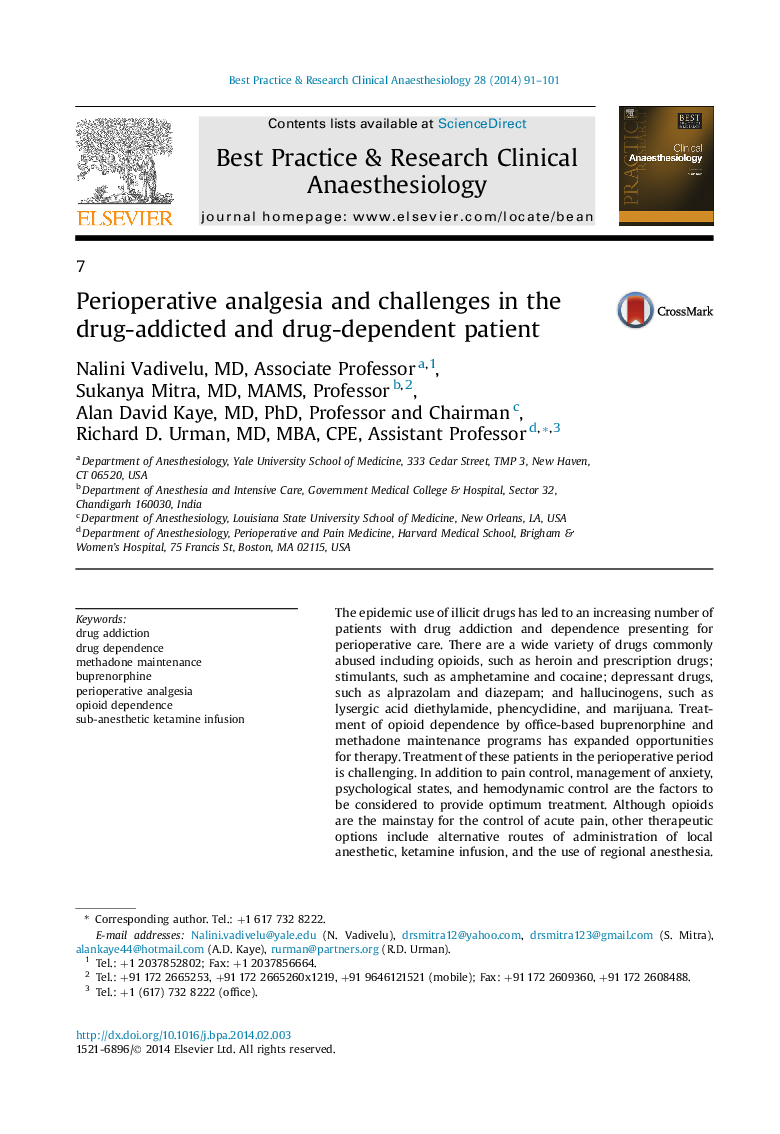| Article ID | Journal | Published Year | Pages | File Type |
|---|---|---|---|---|
| 2748511 | Best Practice & Research Clinical Anaesthesiology | 2014 | 11 Pages |
The epidemic use of illicit drugs has led to an increasing number of patients with drug addiction and dependence presenting for perioperative care. There are a wide variety of drugs commonly abused including opioids, such as heroin and prescription drugs; stimulants, such as amphetamine and cocaine; depressant drugs, such as alprazolam and diazepam; and hallucinogens, such as lysergic acid diethylamide, phencyclidine, and marijuana. Treatment of opioid dependence by office-based buprenorphine and methadone maintenance programs has expanded opportunities for therapy. Treatment of these patients in the perioperative period is challenging. In addition to pain control, management of anxiety, psychological states, and hemodynamic control are the factors to be considered to provide optimum treatment. Although opioids are the mainstay for the control of acute pain, other therapeutic options include alternative routes of administration of local anesthetic, ketamine infusion, and the use of regional anesthesia. We discuss optimum perioperative management, the role of perioperative urine testing, and special considerations in patients on methadone and buprenorphine.
